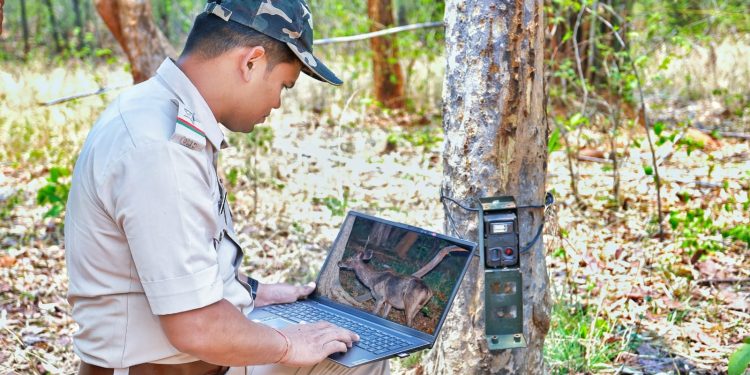Bhubaneswar/Sambalpur: Debrigarh Wildlife Sanctuary has one tiger, 82 leopards and a prey density of 46 per square km, as per the data obtained from the Wildlife Census (Sign Survey) conducted in the sanctuary from May 29 to June 3 by Hirakud Wildlife Division.
According to sources, the first three days of the census were carnivore sign survey and the last three days were herbivore sign survey.
Herbivore or prey density of Debrigarh was pegged at 46 per square km while chital/spotted deer population density is found to be the highest at 90 per sq km. Other species of animals which have the highest density include wild boar, gaur/bison, sambar deer and chowsingha (fourhorned antelope).
Around 1,099 carnivore signs were recorded during the census with a lion’s share of bear and leopard signs.
The leopard count is stated to be approximately 82 while presence of one tiger is confirmed during the last 7-8 months. This is first time in last so many decades that a tiger is recorded in Debrigarh sanctuary during this census.
As many as 12 teams, with three operational control rooms, are monitoring the tiger movement 24X7. Mobile numbers of all control rooms have been displayed in all villages adjoining the sanctuary. Regular meetings and informer networking are being carried out in 48 villages situated on Debrigarh boundary on priority basis. Self-help groups (SHGs) and EDCs are sensitised for tiger conservation and a number of fire points could be controlled by cooperation and support of villagers.
Mobile patrolling vehicles are covering the periphery of the sanctuary from 4pm to 6am next morning daily with sufficient squads and team leaders. This apart, Rs 1,000 is given to informer on each information regarding traps/snares or illegal hooking or poaching incidence.
Recently, three poachers with country guns have been arrested by night patrolling squads. People’s participation in wildlife conservation, protecting the interest of Forest Department communities surrounding Debrigarh, active informer networking, strict action and discipline among the frontline forest officials have helped boost the prey density, said Forest Department sources. After relocation of 400 families from four villages from Debrigarh Sanctuary, more space of around 500 hectare has been created for wild animals inside the sanctuary which has minimised the wildlife depredation and reduced man-animal conflict.
Principal Chief Conservator of Forests, Wildlife, SK Popli, said, “The results have been encouraging due to participation of local community surrounding Debrigarh and hard work by frontline staffers. I have myself interacted with villagers and staffers and in future too they will continue their good work.”
Arindam Ganguly, OP






































